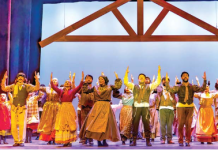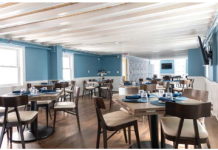By Linda McK. Stewart
“Purely perfect.” Such was the modest assessment of famed architect Stanford White as he surveyed his newly completed triumph, the Tennis Casino at Newport, R.I. The year was 1880, the height of the “Gilded Age.” Today that multi-gabled, green-trimmed shingle and latticework building at 194 Bellevue Ave., set on six pristine acres in the center of Newport, is acknowledged as one of New England’s finest examples of Victorian shingle-style architecture.

The year after its completion, the first U.S. National Lawn Tennis Championship was played on its manicured grass courts. Such was the cradle of what became the annual Grand Slam sequence of the Holy of Holies which begins in January with the Australian Open, followed by the French Open in May, Wimbledon in July and the U.S. Open in September. Who recalls that it all began at the green and black, shingled edifice in Newport, R.I.?
The U.S. Grand Slam Open has long since moved, first to Forest Hills, N.Y. and thence to Flushing Meadows in Queens, N.Y. Today, Stanford White’s masterpiece is home to the International Tennis Hall of Fame and Museum and houses a marvelous collection of tennis memorabilia.
The hall of fame and the museum are imaginatively accommodated on the second floor of the Newport Casino. There, displayed in well-lighted glass cases, are such relics as the old Spalding Davis Classic wooden racquets, strung, of course, not with high-tech synthetic something but with gut, a purely animal product.
After use, those wooden racquets were lovingly placed in clunky wooden presses, tightened on all four corners by metal turnscrews. Head-heavy and awkward, they are a far cry from today’s graphite, titanium sleek racquets… no press needed and who cares if the synthetic strings get wet.
It may surprise younger tennis enthusiasts to learn that at the onset the U.S. Open was “by invitation only.” All players had to be verified amateurs. Gentlemen only.
Anyone who had ever played for money (“just too vulgar”) was ineligible. No blue-collar riffraff. Ladies were welcome, but as spectators only. The first female pro players were not admitted until 1968.
No events with women were held until the 1900s. It was 1914 that Grand Slam play produced the French darling of the crowds, Suzanne Lenglen. Beloved by the tabloids, she led a free-spirited life that thumbed its nose at the rarefied atmosphere that for so long had enshrouded competitive tennis.
And, there she is in the museum, a life-size model in a glass case. Her white dress billows well below the knee, her flapper hairstyle confined by a bright red kerchief. Balancing on one foot, she reaches out fetchingly to swat a ball that floats just an inch or two out of reach.

The spirit of long ago tennis is wonderfully captured by an iconic black-and-white photograph of “Big” Bill Tilden, who is to the world of U.S. tennis what Ben Franklin was to our founding. He’s caught just minutes before stepping on center court to play a finals match. Casually he leans against a pillar, his arms full of the old wooden racquets, puffing on a cigarette. Ah, such elegance!
Great names of the past, Helen Wills Moody, little Mo Connolly (so scandalous in her lace-trimmed panties!), Alice Marble, Frank Shields (Papa of actress Brooke Shields), Bobby Riggs, Jack Kramer – they’re all there, captured either on tape or on video.
To date the Tennis Hall of Fame counts some 200 inductees, of which Andre Agassi and Jennifer Capriati are among the most recent to be so honored.
Use of the grass courts is open to anyone. Reservations are required and may be made one week in advance.
The International Tennis Hall of Fame and Museum welcomes visitors from 9:30 a.m. to 5 p.m. daily except Thanksgiving and Christmas. Admission is $11 for adults, $9 for seniors, military or students with ID. Kids 16 and younger are free.
IF YOU GO: For further information call 401-849-3990 or visit www.tennisfame.com.














